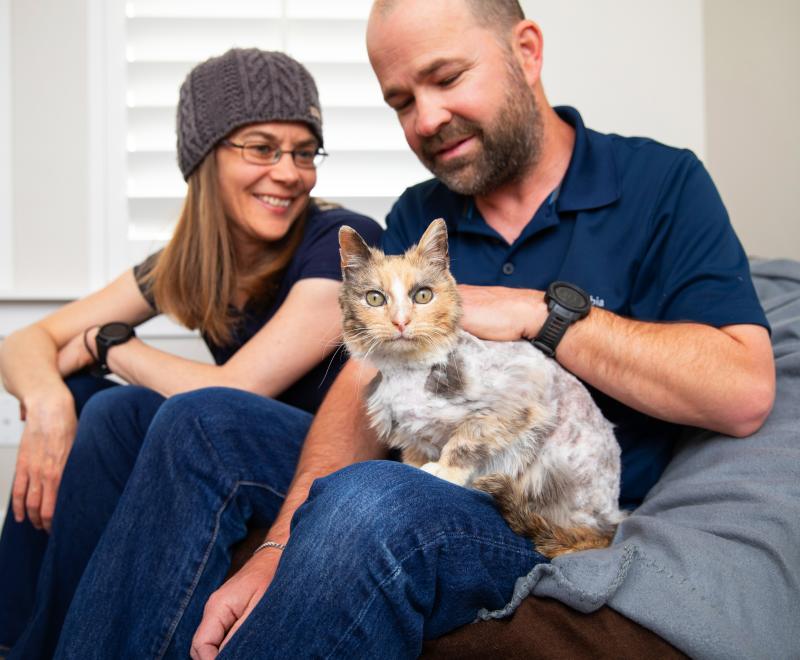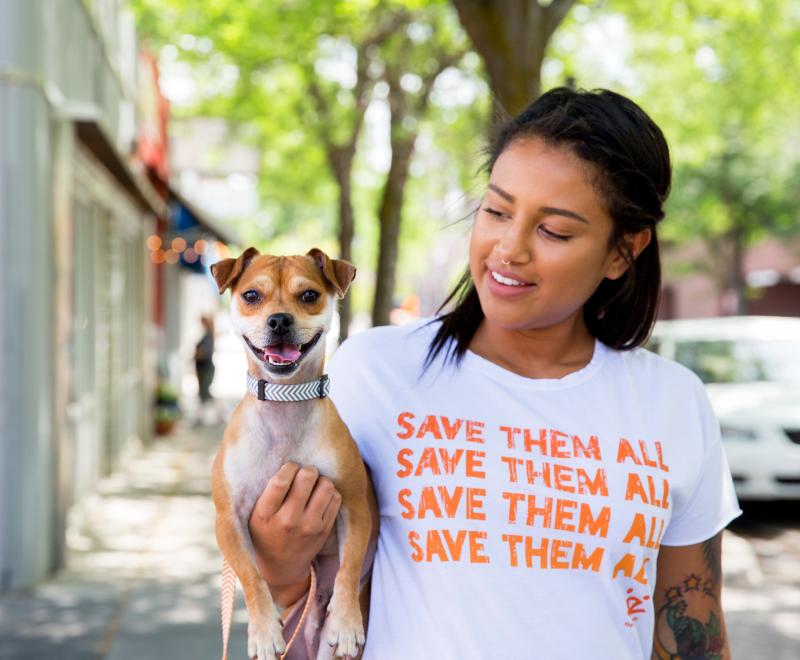Lifesaving tales: The joy of fostering pets

Fostering a pet is a short-term commitment that makes a lifetime of difference. It simply means temporarily opening your home to pets in need and giving them love and care as their home-between-homes. Best Friends’ goal is for all shelters nationwide to reach no-kill in 2025, and people who step up to foster pets, either with Best Friends or any animal shelter or rescue organization, play a vital part in reaching that goal.
Want the inside scoop on all the love and lifesaving that come with fostering? Best Friends supporters have shared some of their foster pet stories with us. And — spoiler alert — many of these pets quickly became official members of their families.
Note: Stories have been edited for length and clarity.
Healing through fostering
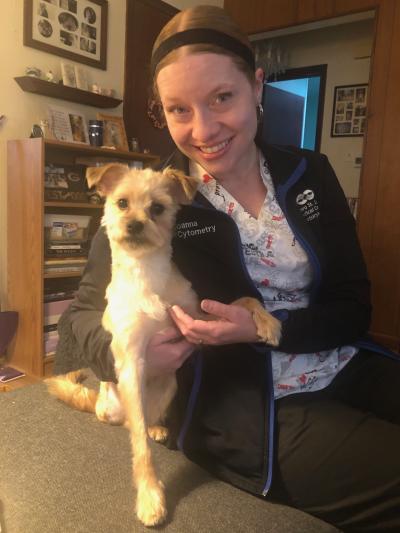
After our previous dog passed away while we were away on vacation, my husband and I were heartbroken. I was ready to get another dog before he was, so he agreed to just foster a dog from a local shelter. Enter Rico, a three-legged dog who became a foster fail by the next day! He was exactly what our hearts needed, and we cared for him as he recovered from the leg amputation and neuter surgery. His cute face, excited wiggles, sweet personality, and bravery won us over and continue to win over anyone he meets.
It's been almost two months since he came home, and I’m so proud of him. I would love for kids who are missing limbs to see Rico and know life can still be celebrated and lived to the fullest. So if I can ever find the time, I’d love to get him certified to take him to children’s hospitals. In the meantime, perhaps this can be some inspiration to all, including those who have lost a pet and don’t know how to go on. Happiness will come to you again.
— Joanna Leon
A safe haven
In 2017, I brought home a bewildered kitty, Camilla, from Austin Pets Alive. Camilla was one of hundreds of animals evacuated from Houston animal shelters as Hurricane Harvey was bearing down on the city. Austin Pets Alive needed foster volunteers. I decided to answer the call.
Because I had my sweet orange tabby Gimli at home, Camilla stayed in my guest bedroom. She had cried in the carrier all the way home, but once settled she was completely comfortable. I knew she would become Gimli’s little sister. She’s so sweet, loving, and still playful at 9 years old. Her purr brings me peace. I love her so much!
— Diane Farnsworth
Patient love
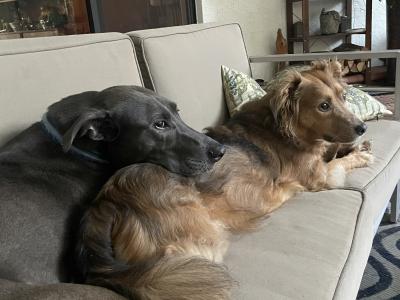
I was a foster caregiver for Delaney (the scruffy brown dog in the photo) and her four siblings. They were 8 weeks old when I started to foster them. They had been living on the streets with their mom and two more siblings when I got them. Delaney was a puppy with trust issues and was not quick to warm up. She was adopted but returned a few weeks later. At that point I knew I needed to adopt her.
It took her almost a year to settle in and trust. Now, four years later, she is an amazing love bug and bonded to another one of our rescued pets, Leia, but she gets along with all five of our rescued pets. She has taught our children the importance of patience, loyalty, and responsibility.
— Kate Moffitt
Planes, trains, and kittens
I was volunteering for a local shelter that needed someone to pick up a cat from the airport. Typically, these types of requests required a volunteer to have a car, but since this time it was just one cat, it wasn't necessary. I live by the public transit to the airport and had nothing planned that Friday night, so I volunteered to pick up and foster the cat overnight.
At baggage claim, I met her transporter and heard meowing coming from a carrier. It was a 4-month-old torbie kitten! Over the course of our train ride back into NYC at 1 a.m., I served her a meal and chatted with our fellow riders. I knew it was love when I was cleaning out her carrier and found a lone toy mouse. I threw it for her and saw the cutest bunny kicks. She, on the other hand, entered my home as if it was hers.
After a few weeks of reminiscing about that night and panicking to get an adoption application in, she was officially part of the household.
— Alexandra Singer
Love at first sight
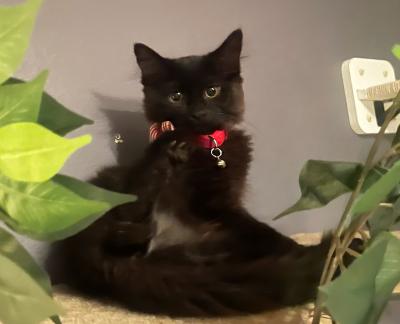
I was helping a rescue group I foster for by taking in cats and kittens affected by the wildfires (in Los Angeles). One evening I received a call asking if I could take in a mama with her six babies. I said absolutely! Mama and her six black and gray kittens showed up.
That evening, I gave them all baths, dried them, fed them, and made my bathroom into a little hotel where they could finally get some good sleep, away from the dangers of the fires. There was one who stood out. She was scared (they all were) but oh so loving and sweet. I knew I wanted this long-haired black kitten from the minute I saw her. It didn’t take long before I fell completely head over heels for her.
Naming her proved more difficult than usual. I ended up naming her Kala, which means in different languages either freedom/free or princess. She acts like a princess sometimes, so it suits her. It’s taken a little adjusting to being the little sister of another foster cat I am keeping (from a different litter) and my resident cat, but it’s all working out beautifully. Kala is currently snuggled on my lap.
I’m so glad I had the opportunity to help in just a small way with the fires and also to adopt. I will always remember this time in our lives — not only the devastation of the fires but all those who came together to help afterward. It was a beautiful thing to see.
— Laura Hayden
Welcoming a furry houseguest into your home, even for just a few nights, doesn’t just help that pet. It also frees up space in the shelter to save more lives. Learn more about the fun of fostering at bestfriends.org/foster.
Let's make every shelter and every community no-kill in 2025
Our goal at Best Friends is to support all animal shelters in the U.S. in reaching no-kill in 2025. No-kill means saving every dog and cat in a shelter who can be saved, accounting for community safety and good quality of life for pets.
Shelter staff can’t do it alone. Saving animals in shelters is everyone’s responsibility, and it takes support and participation from the community. No-kill is possible when we work together thoughtfully, honestly, and collaboratively.


